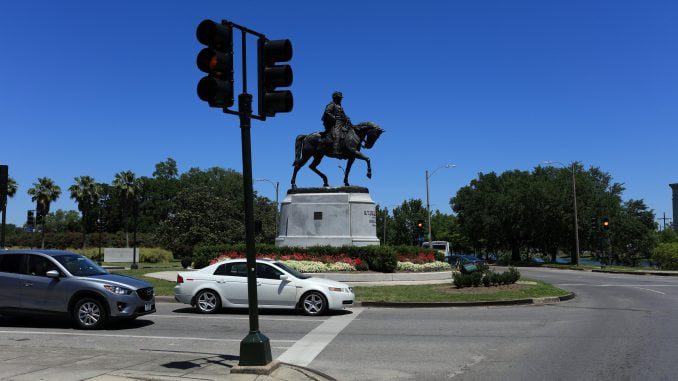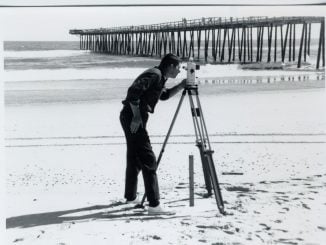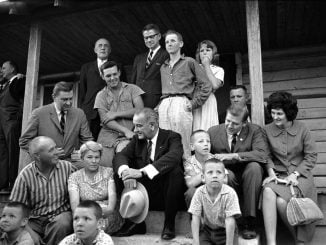
Trying to write anything about Confederate history or monuments is an enormous task in today’s hyper-partisan and sensitive culture. Nearly impossible is attempting to discuss the topic in a public forum. Any conversation immediately results in frantic yelling, and shouts of “racist,” “Nazis,” or much worse. No matter what position somebody takes, stupidity on both sides quickly reigns.
In his brilliant book “Paul Revere’s Ride,” historian David Hackett Fischer wrote that the “only creature less fashionable in academe than the stereotypical dead white male is a dead white male on horseback.” However, far below that in our current politicized culture is anyone in history with ties to the Confederacy.
That escalation continued this week in dramatic fashion with the removal of the first of four Confederate monuments in New Orleans. Around 1:30 a.m. on Monday, workers wearing flak jackets, masks, and helmets removed a controversial Liberty Place monument that was erected in the heyday of post-Civil War Anti-Reconstructionist uprisings. Some news organizations even highlighted the presence of police barricades and snipers to aid the stealth-like removal process.
With a more direct tie to white supremacist ideology and thought, the Liberty Place monument is certainly the most problematic of the four. The mayor has refused to negotiate in any way to contextualize any of the pieces and has vowed to not disclose what is coming down next and when. He claims such disclosure would threaten public safety given the reports of death threats.
Three other monuments, of Gen. Robert E. Lee, Gen. P.G.T. Beauregard, and Confederate States of America President Jefferson Davis, are slated too for removal by the city of New Orleans. The Lee statue was cited as one of the 11 must-see statues in New Orleans Magazine as recently as 2011. But now it is another monument destined for a storage bin. Although the mayor concedes one day a suitable alternative location might be found, he is only able to add a “maybe” caveat.
Confederate monuments in New Orleans, like many across the South, are being defaced by a rising tide of vandals. Recently and again, Silent Sam on the UNC Chapel Hill campus was spray painted by somebody or a group protesting “hate.”Of course, monuments are being removed other places. A statue of Jefferson Davis was already removed from University of Texas at Austin, and Gen. Lee is being removed from downtown Charlottesville, Virginia. Those are only a few examples.
More level-headed skeptics of the removals, not the ones blindly yelling “heritage not hate,” are asking, “Where does it end?” New Orleans native and Jazz musician Winston Marsalis supported the memorial removals and said those figures don’t represent the heroes of New Orleans. Ironically he cited Andrew Jackson as one of those heroes, which he was and is, but he was also a slaveholder. Jackson’s views on race were much less progressive than Beauregard. The “Little Napoleon” as he was sometimes called, supported civil rights measures, and after the war he served his hometown of New Orleans in myriad ways before his death.
The point is not to defend the Confederacy—some of its characteristics and principles are indeed indefensible. But as students and studiers of history know, the past is always much more nuanced than what may first appear.
Should Birmingham, Alabama one day wipe away the statue and landmarks of Civil Rights icon Fred Shuttlesworth because he opposed gay marriage? Should Milwaukee remove its Gandhi statue because of his views and attitudes toward “inferior” black Africans?
North Carolina lawmakers made the right call a couple of years ago to add protections to monuments in the Old North State. Hopefully we can avoid the political fiasco of using Confederate monuments as political scapegoats for deeper problems ingrained in culture or within the human heart. After all, it’s not the past that can be changed, but the future. In a nation that is divided possibly more than any time since the Civil War, visible reminders of the enormous cost can only benefit all of us.
Ray Nothstine is a member of the North State Journal’s editorial board, separate from the news staff. Unlike other newspapers, the North State Journal does not publish unsigned editorials; the author or authors of every editorial, letter, op-ed, and column is prominently displayed. To submit a letter or op-ed, see our submission guidelines.



